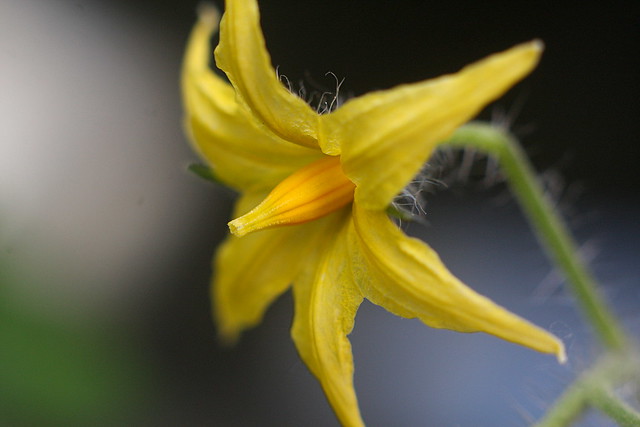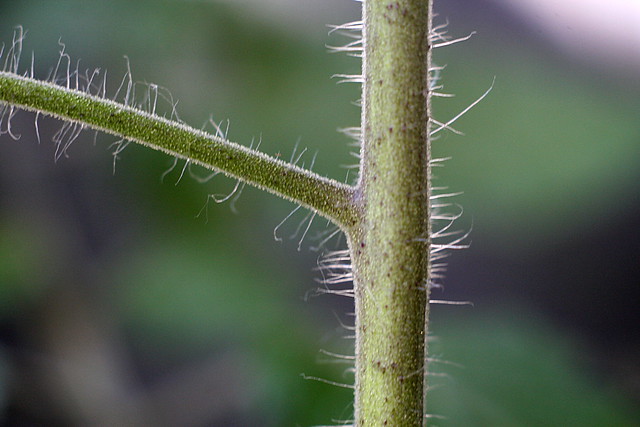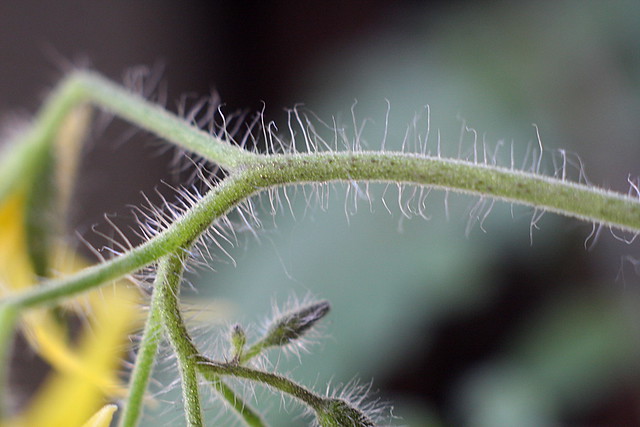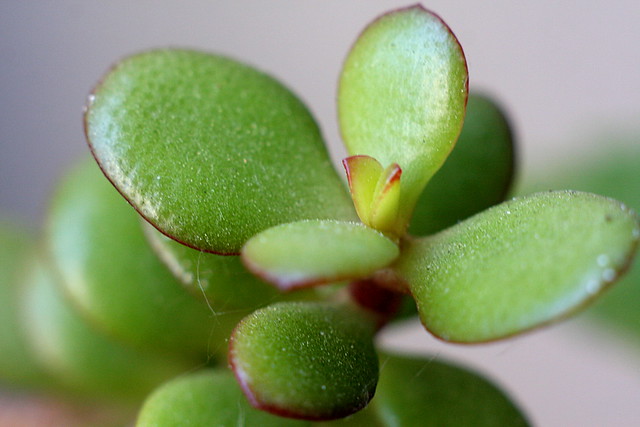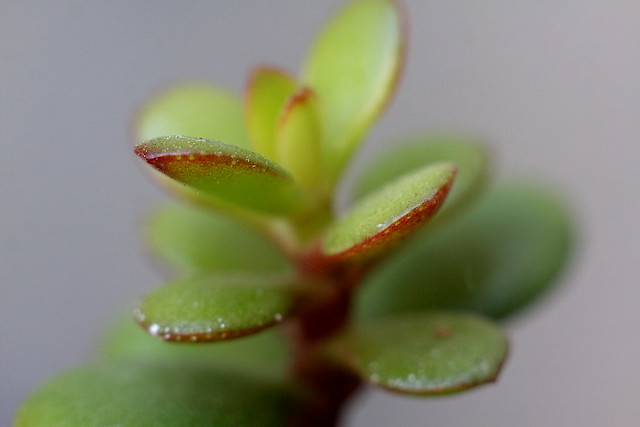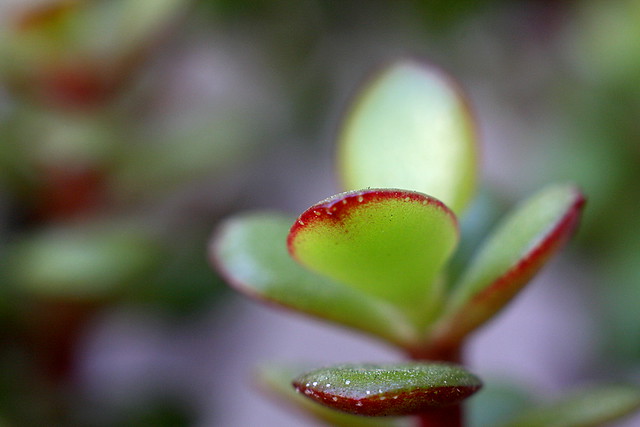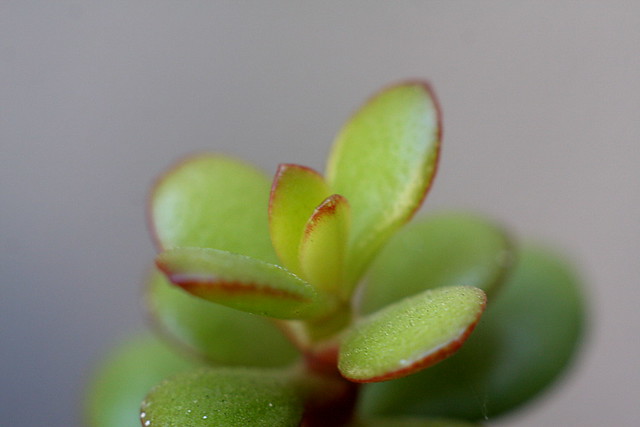Friday, June 13, 2014
Tuesday, June 10, 2014
NE 6th & Going St.
Today's painted intersection is at NE 6th & Going, just east of MLK Boulevard and next to King Elementary. The design has trees, flowers, rainbows, birds, musical notes, local community buildings etc., arrayed around a central sun and moon. I wouldn't rely on it as a guide to how the universe is laid out, but it seems nice and cheerful. Intersection painting is often arranged by neighborhood associations, but this one seems to be spearheaded by Envirovillage, a local nonprofit, with some help from volunteers recruited through Alberta St. Last Thursdays, the trendy monthly art party.
A couple of years ago, this intersection got a post on Sonic City PDX, a Tumblr where local artists and musicians contributed interesting soundscapes from around the city. It seems there's a large tumbledown house on one corner of the intersection; parts of the house are painted a loud shade of purple, and whoever lives there is in the habit of blaring classical music at random hours of the day. Because this happened in 2012, the project also involved QR code stickers, which you could scan to take you to the appropriate Tumblr post. Those stickers may not have survived the elements, so here's the link. I'm pretty sure that's easier than scanning a QR code anyway.
I'm fairly sure that house is haunted, actually. I was looking through the Oregonian database for anything interesting that might have happened right here. A bit of juvenile delinquent car theft, but I also came across a long family saga of misfortune spanning several decades, pieced together through occasional newspaper stories. I usually go wherever the search results take me, but I went back and forth about including the story; I think I'll just give a synopsis and not link to the newspaper articles or include exact dates or people's names, since some of them might still be around, and I'm not really in the business of reopening old wounds. You'll just have to trust me that this was in the paper. Or you can find it in the Oregonian database yourself if you care to look. Or we can just call it a ghost story and leave it at that.
The family in question came to Portland during World War II to work in the shipyards, and they settled in shiny new Vanport City. (The husband also worked in construction at Hanford for a while at some point.) They lost almost everything in the Vanport flood, and the paper ran a photo of the family as refugees, showing the parents, their eight children, and their few surviving belongings. Eventually they ended up living at 6th & Going. Some years later, the husband was a witness to a drowning at Swan Island; a few months later he himself was dead, shot by his wife while they were visiting friends elsewhere in town. She insisted it was an accident; she'd never used a gun before, she said, and was just trying to scare him, with a little help from a .38. The state put her on trial anyway. The database didn't tell me how the trial turned out, but a few months later one of the now-nine kids shot and wounded his sister with a .38, possibly the very same gun that killed their father. Other siblings (I think) showed up in the paper at least through the 70s, typically drug and petty crime arrests in the police blotter, as if their world had imploded.
I don't really want to end this on a down note, since that happened a long time ago, and today's intersection is apparently 100% sweetness and light, and birds, and fish, and music, and community spirit, etc., and as far as I know you're probably OK trick-or-treating at the spooky classical music house.
Sunday, June 08, 2014
C & A
I was walking in the West Hills along SW Market St. Drive (yes, it's a street and a drive) when I noticed a pair of familiar-seeming sculptures at the entrance to the swanky Vista House condo complex. I thought, hey, those look like something Lee Kelly might have made. As you might already know, I'm not really a huge fan of his stuff, but it's gotten so I can often recognize it on sight. I went over to take a closer look. On the back, each has the cursive word "Lee". The taller one on the left has the number "90" near the signature (which I assume is the date), and a letter "C" on the base. The other has a "96" near the signature and an "A" on the base. I think then numbers are dates (1990 and 1996, the latter being the year the complex went in). I'm going to guess that the letters are titles, so one is just called "C" and the other "A". I have to guess because I can't find any info anywhere about the sculptures, and I've looked.
While searching for any more info, I ran across a 1996 Randy Gragg column detailing the long, strange history of the Vista House Condominiums. The owners of the land had been proposing various high rise tower designs for this location on and off since 1948, and were repeatedly rejected due to zoning, or neighbor concerns about significant trees. Gragg had high praise for the developer, for barreling through small-minded opposition like a true Fountainhead acolyte. But he didn't like the finished product, going so far as to compare the exterior to low income housing, which is possibly the ultimate insult in his lexicon. He may have been on to something this time, though, because the exterior was that infamous mid-1990s synthetic stucco that caused a national epidemic of black mold and leakage problems. In the mid-2000s the buildings were wrapped in protective tarps for over a year while work crews replaced the buildings' exterior surfaces. It was not a pretty sight.
Saturday, June 07, 2014
Monday, June 02, 2014
Buckeye Bench
So this is one of the more minor entries in this humble blog's ongoing public art series. Buckeye Bench is a bench next to the playground in NE Portland's Woodlawn Park. The designs on the sides of the blocks are nice, certainly, but if it hadn't been in the city public art database, I doubt I would have even noticed it, much less given it a post of its own. And still, it's basically a set of low cinder blocks to sit on, so don't expect amazing ergonomics here. The RACC database says this is a One Percent for Art project, so I'm guessing the budget here was one percent of some relatively small and cheap project. RACC's description is fairly brief:
“This bench takes its inspiration from the Sweet Buckeye tree that grows in the park just southwest of here.”
The cast forms resemble three views of the tree’s leaves - a complete leaf, a close-up and an even closer view of the leaves’ ends.
Buckeye Bench was created by Anne Storrs, who also created Tall and Fallen at the SE Main MAX station on the Green Line, and Begin Again Corner at SW 5th & Columbia in downtown Portland.
I'm not sure which nearby tree was the inspiration for the bench, mostly because I can't identify buckeye trees on sight. They aren't native to the Pacific Northwest; the sweet buckeye (pictured here, apparently) is native to parts of Appalachia, while the Ohio buckeye (Ohio's state tree) has a wider range across the Midwest. Not to be confused with the buckeye candy, a chocolate-dipped peanut butter ball that happens to be Ohio's state candy. Oregon, I'm sad to say, doesn't have a state candy. Pears are the state fruit, chanterelles are the state mushroom, and hazelnuts are the state nut. Chinook salmon is the state fish, and Dungeness crab is the state crab. Milk -- not IPA or pinot noir -- is the state drink. And that's the entire list, foodwise, unless people out there are eating monarch butterflies and I don't know about it. It's a boring list. I was bored just typing it.
Sunday, June 01, 2014
Big Pipe Portal
This stop on our ongoing public art tour takes us to industrial Swan Island, home to Big Pipe Portal, a monument to... um... an enormous sewer pipe. The sculpture is a round archway at the south end of McCarthy Park, on the upstream side of Swan Island. It's a short walk from the McDonalds, in case you need somewhere to park or have a sudden craving for a McRib. The RACC description explains what's going on here:
This sculpture is sited on the banks of the Willamette River at the confluence of the East Side and West Side Combined Sewer Overflow (C.S.O.) tunnels, and is surrounded by a man-made home to heavy industry. The sculpture echoes an ecological approach to the built environment wherein manufacturing is interwoven with our shared natural resources.
Although the Big Pipe Project is the largest infrastructure project in Portland history, it is largely invisible. Working closely with the Bureau of Environmental Services, the sculpture celebrates this hidden work by revealing and readapting massive precast concrete segments of the Big Pipe. These pieces of infrastructure are now put to work in support of art and narrative. Partially buried in the alluvial bank, the sculpture traces out the circumference of the hidden pipe and transforms it from an industrial artifact into a woven arch of currents and eddies.
The page also notes it was created by the design firm rhiza A + D, which also designed Cloud Cavu at the Cascades MAX station near the airport.
The Big Pipe project is a long-running city project intended to keep raw sewage out of the Willamette. Early on, the city made the unfortunate (but common) decision to have city sewers and storm drain runoff use the same pipes. This obviously saved money, and it generally did the job, except when the combined system was overloaded. When that happened, the overflow, um, material had to go somewhere, and unfortunately the only place it could go was directly into the river. And even more unfortunately, the system was overloaded a lot, because it rains here. So the idea behind the Big Pipe was to install enormous underground pipes on each side of the river to catch the outflow before it got to the river, and eventually direct it to the big sewage plant in North Portland. The westside Big Pipe actually tunnels under the Willamette right around here, and a huge (and mostly underground) pumping station here on Swan Island (next door to Big Pipe Portal) sends it uphill for the last leg of its journey to North Portland. As the description above explains, this was the largest and most expensive infrastructure project in Portland history, and yet the only parts of it visible to ordinary citizens are higher sewer bills, and a drop in the number of "ZOMG Don't Touch The River" alerts on the evening news. Don't get me wrong; like most people over eight years old, I'm basically ok with the sewer system being invisible. I can see how the Bureau of Environmental Services (the oh-so-delicately-named sewer agency) might feel their $1.4 billion investment has gone unappreciated, though. So the art helps the public imagine just how big the pipe is, without making people dwell on what's burbling through the pipe.
Coyote VI
Today's item from outside the Portland Art Museum is Coyote VI by Gwynn Murrill. As the name indicates, it's part of a series of coyote designs: Coyotes V and VII are in Jackson, WY, and the latter once was (or another copy of it now is) in Venice, CA. Coyote III, made of koa wood, remains in the artist's collection. Where the others are is left as an exercise for the reader. A post at Fifty Two Pieces has more about Coyote VI, as well as a cute real coyote that managed to sneak onto a MAX train a few years ago.
The collar isn't part of the sculpture, by the way. Some joker must have added that. Wasn't me. Honest.
Here's an article by the artist describing a recent exhibition of her work in Century City, CA. The city took the unusual step of designating the median strip of a major road as a rotating sculpture garden, and it hosted a collection of Murrill's animal and bird sculptures from November 2012 to January of this year, for the enjoyment of passing drivers. That is an extremely Californian idea. Not only would it not happen her; the idea it wouldn't even occur to anyone here. Which is fine, I mean, we aren't really a city of grand boulevards anyway, and I'm not sure where you'd put something like this. Probably out in the 'burbs somewhere, and then nobody would notice except metal-thieving tweakers. I can see how this would work in Southern California though.Old City Boundary Marker
Here's an odd little object. Along the east edge of NE Portland's Columbian Cemetery, next to a tree and buried in underbrush, is a small stone that isn't a headstone. Its northern and southern faces are inscribed "CITY BOUNDARY", with a scratch mark along the east and west faces that (presumably) indicates the exact line of what was once Portland's northern city limit. I don't have even a rough date for it; I'd guess early 20th century, maybe 1910-1920 going by the typeface, and the fact that it's concrete and sort of shaped like Columbia River Highway mile markers, not the older milestones along Stark St. I don't think there is anything particularly special about this spot, so I assume there are (or were) other boundary stones like this. But I have no idea where any of them might be. The city has a handy Annexations by Decade map, which tells us that this became the city limit between 1891-1900, and stopped being the city limit some time in 1971-1980 when the city annexed up to the Columbia River. So the map's interesting, but it doesn't really give us a narrow date window. It might be a guide to where other city boundary markers are (or were), though. Vintage Portland has a 1915 annexation map with a note that the exact boundary ran "150' N. of and parallel to NL of Columbia Slough Boulevard", and further that it had been annexed in 1891 by the erstwhile City of Albina, the same year Albina and East Portland merged with the City of Portland.
When I visited, I knew precisely two things about this marker: A blog comment from Gentle Reader Aimee Wade alerting me to its existence (thanks!), and someone else's Panoramio photo showing what it looks like. That photo was crucial, and I never would have found the marker otherwise. I sort of wandered around the cemetery for a while, looking for a spot that matched the photo. The surrounding brush was taller than in the photo, partially obscuring the marker, which complicated the search a bit, but I eventually found it. For anyone who's interested in this sort of thing, it's right on the eastern edge of the cemetery. The blank wall of a giant warehouse is just inches away; I think they built it right up to the property line. I found the marker by going to the SE corner of the cemetery, near the entrance, and following the wall north, looking around the base of each tree until I found it. I'd say the marker's about 1/4 to 1/3 of the way back along the wall, on the south side of a small tree. (Alternately you could just measure out 150' from the north edge of Columbia Blvd. and look there, although I assume the street's been widened since 1915.) The marker was shorter than I'd expected, and I had to rummage around in the bushes to get these photos. As I was doing this, an elderly volunteer wandered over and we chatted a bit. He didn't seem know anything more about the marker than I did. He had some other trivia to share about sorta-famous, uh, residents of the place, but I'll save that for another post.
The Lavare Lions
The main entrance to Portland's Washington Park dates back to the early 20th century, and has a formal, old-fashioned feel. SW Park Place ends at the park, becoming the park loop road (Sacajawea Blvd. / Lewis and Clark Way). At the intersection, brick stairs lead to a small garden crowned by a monument to Lewis and Clark. Embedded in the brickwork, greeting visitors, are a trio of stone panels with Art Deco lions. They're low-relief designs and the lions are easy to overlook. I've always liked them, even if they're a bit anachronistic: Everything else in this corner of Washington Park is Victorian or at best Edwardian, so Art Deco looks sort of futuristic in this context. Until recently I didn't know anything about the two lions. None of the public art resources I usually check have anything to say about them. Fortunately the artist signed his work (protip to artists: always do this), and that was enough for me to figure out the rest.
The lions are the work of Gabriel Lavare, who I gather was fairly well known in his day but who seems to have vanished from the annals of Portland art in subsequent decades. Oregon, End of the Trail, the 1930s WPA travel guide to the state, lists him briefly among contemporary Oregon artists:
Gabriel Lavare, who also came from California in the early 1930's, is best known for his bas-reliefs -- carvings over the three entrane doors and the Mother and Child medallion in the foyer of the new Oregon State Library, the lion and lioness at the entrance to Washington Park, Portland -- and for the Town Club fountain.
The lions were apparently a WPA project too. A December 1934 Oregonian article raved about the lions, which had just arrived:
Those who in the future view the plaques will be impressed by the extreme simplicity with which Mr. Lavare has achieved his effect of strength, suppleness and poise which is characteristic of the cat family. Not all will realize the difficulty involved in such simple treatment and appreciate the artist's problem and the real ability which he has shown in solving it.
The designs of the lion and lioness are based on a form approximating a right-angle triangle in a square. In the lioness there is the sinuous line and alert awareness of the female, and in the lion the massive form and the unwavering strength of the male.
Mr. Lavare gives the following brief explanation of his work:
"I desired to obtain the utmost in surface decoration in the most restricted manner of carving. The style of carving was the natural outcome of working in a large, but thin, area of marble. The brittleness of the marble did not allow a depth of carving deeper than three-eighths of an inch.
"Therefore, the masses had to be arranged accordingly and every muscle which was unnecessary eliminated. Only the fewest muscles possible are depicted, and these only in order to define more distinctly the major masses."
In case you're wondering "Why lions?", it wasn't a random choice. The original Portland Zoo was somewhere nearby, just inside the entrance to the park. I haven't figured out where all the various parts of the old zoo were, but its seal pond was at the bottom of the hill near Burnside, where the Loyal B. Stearns fountain is now.
An Oregon Historical Quarterly article about the painter C.S. Price notes that he and a number of other artists, Lavare among them, had studios in the ornate but shabby Kraemer Building, at SW 2nd & Washington. The building was demolished in the name of Progress around 1951-52, and the corner is now home to the westbound offramp of the Morrison Bridge. There is nothing particularly Bohemian about the surrounding area today; like its contemporary, "The Village" on Upper Hall Street, the Kraemer Building has been quite thoroughly erased, and replaced with boring respectability.
Lavare's 1966 obituary mentions that he had moved back to California at some point. Prior to the obit he hadn't been mentioned in the Oregonian since 1941, so I gather he wasn't part of Portland's midcentury arts scene.
Here are a few other Lavare works I came across while looking for information about the Washington Park lions:
- 1937: Photo of Lavare at work on a Magellan statue. Also 2 photos of decorative newel posts for someone's home.
- 1940: photo of a bas-relief pioneer mother at the Oregon State Library 1940: A relief in profile of Dr. John E. Weeks, at the University of Oregon medical school, now OHSU.
- 1941: A panel of various Portland industries, for the United Airlines office at the Portland airport, 1941. Given the date, I think this would have been the current Portland airport, which opened in 1940, but it would have been in the original terminal building near Marine Drive, across the runways from today's terminal. The old terminal now serves as the airport fire station.
- 1941: A trio of decorative panels for Pilot Butte Inn in downtown Bend. The Pilot Butte Inna was listed on the National Register of Historic Places in 1972, but demolished anyway in 1973.
- The 1934 article about the lions mentioned he was working on World War I memorial panels in the Federal Building, which I think is today's Gus Solomon Courthouse / Post Office.
- Gargoyles on the Oregon Portland Cement Building next to the Hawthorne Bridge. I've always liked these little gargoyles. Don't be surprised to see a blog post about them at some point, sooner or later.
- Decorations in Portland's Jantzen Knitting Mills office.
Friday, May 30, 2014
Dance Horse
Today's spooky item from outside the Portland Art Museum is Dance Horse by Deborah Butterfield, who has specialized in abstracted horse designs like this.
I admit this thing kind of creeps me out. There's something sort of primordial about it, like a horse from a Lascaux cave painting. But it also looks like a skeleton, or maybe a horse golem made of driftwood.
I like horses, but they can be kind of creepy even in the best of circumstances. They can kill you umpteen different ways, but they usually just a sugar cube. And when you give a horse a sugar cube, you have to hold it just so, because a horse has an enormous mouth full of nightmare teeth, and it could easily bite your fingers off without even noticing. And that's when they aren't casually trampling you, kicking you to death accidentally, bucking you off, or rolling over on you.
I'm reminded of this one time at Boy Scout summer camp. I was trying for Horsemanship merit badge, one of the highlights of summer camp (especially for those of us who weren't really into swimming or target shooting). The main event involved a big group trail ride out away from the camp. I'm not sure how far; it felt like forever but it was probably just a couple of miles tops. By luck of the draw, I'd ended up with a horse that was highly intelligent and held an abiding hatred for all humanity. It kept ducking under low tree branches, trying to knock me off its back. It would even weave off the trail when it saw a promising tree branch off to the side, despite anything I futilely tried to do with the reins. I think I earned my merit badge that day just by staying on.
I'm also reminded of another time at the Oregon coast, years ago, renting horses to ride on the beach. I realize that's a cliche torn from the cover of a bodice-ripping romance novel; it seemed like a good idea at the time. Anyway, that time was actually fine, with a perfectly docile, non-homicidal horse. Except for the flatulence. Equine flatulence is a force of nature, and not one of the more pleasant ones. All the recycling and walking to work and environmental do-gooding I've ever done probably still hasn't made up for the horse methane from that one day at the coast.
NE 8th & Holman
The next stop on the painted intersection tour is at NE 8th & Holman, which has one of the more elaborate designs I've seen so far. A 2011 BikePortland article about the intersection describes the design:
The design itself, created by local artist Zac Reisner, is a four seasons theme. Each leg of the street represents a different season and it’s all tied together by tree roots and a stream in the middle. The animals in the painting — a coyote, raven, raccoon — are all regular inhabitants of the street.
That article links to a time lapse video of the 2011 painting. The intersection's Facebook page says it was just repainted again a few days ago (now being late May 2014), and links to a Flickr photoset of this year's event. My photos were taken just before that, so if you see anything that loo
The Guardian, of all places, has a slideshow of the 8th & Holman intersection, as part of their surprisingly extensive travel coverage about Portland. Their latest piece, about food carts, isn't bad, even if they didn't include Potato Champion (the poutine cart) in their Top 10. I suppose the Guardian squeeing about us is the new New York Times squeeing about us. At least it's the Guardian; it looks like the Daily Mail still hasn't discovered us, so those British tourists don't have us in their crosshairs quite yet.
NE 8th & Holland
The next painted intersection on our tour is at NE 8th & Holland, in the Woodlawn neighborhood, just south of Lombard. This is an odd awkward intersection, where the normal city street grid meets the goofy Woodlawn street non-grid. Some parts of that neighborhood have diagonal streets; here they're oriented normally but not quite in the right place. Thus Holland jogs about a house width north when it gets to Woodlawn, and 8th jogs about a house width east at the same point. That makes for a very wide expanse of pavement here, and it's not a major intersection, so it practically begs for the City Repair treatment. I can't find a project page for this one that explains what the design's all about, but I did find the Kickstarter that paid for it (since the main expense for these things is always paint). I also located a video of the painting party in June 2013, as well as someone's Flickr photoset of the event.
Wednesday, May 28, 2014
N. Williams & Russet
The next painted intersection on our ongoing tour is at N. Williams Ave. & Russet St., just north of Lombard, and just a few blocks south of the industrial side of North Portland. This one's also maybe known as "Loveleigh Neighborhood Watch", unless that's just the group that put it together; I'm not entirely sure. I usually just quote from the project page to explain what the design's all about, but this one makes more sense if you have the full About section for context. I've noticed that City Repair web pages seem to come and go unpredictably and the page might vanish at some point, so here's what they had to say:
Our neighborhood is in transition. It has seen illegal dumping, day-time break-ins and theft, drug production and selling, prostitution, gang conflicts. It’s bounded by busy thoroughfares -- MLK to the East, Lombard to the South, Vancouver to the West, and to the North, the railroad, six tracks (some liken the boom and trundle to a heavy day at the coast).
But there is a great potential here -- new families, first homes, neighbors who step forward, at- tend meetings, and contribute their ideas and, most important, their participation. This transition is marked by newly planted trees, children biking, neighbors chatting – and now, a street graphic project.
Our design is simple, a rose (is a rose is a rose, thank you Gertrude) and the cardinal directions formed by leaves. And then there’s the dream: a community garden in an undeveloped street.
Robert Pirsig, in Zen and the Art of Motorcycle Maintenance, wrote about the difference between spectators and participants. Spectators are on the sidelines, watching. Participants are on the field, engaged. Spectators toss their Taco Bell wrappers in the gutter. Participants pick them up.
Our neighborhood is being occupied by participants. OCCUPY LOVELEIGH!
Tuesday, May 27, 2014
Rhododendrons
Today's object from outside the Portland Art Museum is the smallest of the lot, unless there's an even smaller one I haven't noticed yet. Marie Louise Feldenheimer's Rhododendrons is a small bronze panel on a wall in the museum's outdoor sculpture court. I hadn't noticed it before, but it's been outside the art museum since at least 1978, which tells you something about my powers of observation, or lack thereof.
I wasn't familiar with the artist so I did a bit of digging. It seems she was a local heiress, born in 1894, whose father and uncle owned a Portland jewelry business. Her name first appeared in the paper in the society pages, and then she moved to New York City to study art, before eventually returning to Portland. A 1925 article showcased some Egyptian-influenced granite sculptures she'd recently created, Egyptian being all the rage at the time. These were purchased by "American Museum of New York", whichever one that is. The Smithsonian art database is no help in this case, since the only work of hers it lists is Rhododendrons. The RACC database also lists a Bust of Willem van Hoogstraten, conductor of the Oregon Symphony from 1925 to 1938, now located at the Performing Arts Center. Her work was the subject of a 1985 retrospective at the museum, in honor of her 90th birthday.
On the Oregon coast, south of Seaside, is popular Ecola State Park. Adjacent to the state park is the densely forested Elmer Feldenheimer State Natural Area, named for Marie Louise Feldenheimer's brother. A 1990 Oregonian profile of her explains that she'd donated the land in his memory. This was one of a number of philanthropic conservation efforts she was involved in, including Nature Conservancy projects at Tillamook Head, near Ecola State Park, and preservation work on the Olympic Peninsula with the guy who later started Ecotrust (the group behind the renovated Ecotrust Building in the Pearl District). Feldenheimer passed on in 1993 and left a large bequest to the state park system.
I'm not really in the business of praising rich people. If they're going to exist, though -- and I'm not entirely sold on that point -- they could do a lot worse than creating some art and doing a bit of philanthropy. I'm fairly sure this was the exception to the rule back in the mid-20th century, and it's certainly not very widespread now either. Some of our present-day oligarchs really and truly want to be Bond villains (and I won't list the guys I"m thinking of, because they have lawyers and worse), while others just want their own reality shows (and usually get them).
In the unlikely event that you're a real-life rich person and you're reading this, you've already passed the first test. The fact that you're here means you're far more sophisticated and discerning than most of your peers. So consider sending the kids to art school. Maybe donate to a museum or the state park system, or a local university. They'll happily put your name on something; you'd barely even need to ask. Any one of these things lasts longer than a family fortune does, even with today's crazy-low inheritance taxes. People will speak fondly of your wise and generous nature, and not ask impertinent questions about how you got all that money in the first place. Sorry, that slipped out. I mean, it helps you put your best foot forward, in the eyes of future historians, as well as random internet people of the future who have whatever replaces blogs fifty years from now. I can't really explain why that would be important, but I'm pretty sure it is.
Freda's Tree
The next painted intersection in our ongoing tour is at NE 56th & Stanton, a design known as "Freda's Tree", located a few blocks north of Sandy Boulevard and the big George Washington statue. The project page for this intersection says it "commemorates a magnificent chestnut tree that was at this corner for nearly a hundred years." There's also a leave-a-book, take-a-book free libray kiosk next to the intersection, also part of the City Repair effort. I hadn't brought a book to trade, so I didn't take anything. It didn't seem fair otherwise, me being a tourist from outside the local neighborhood.
Ralph Friedman's 1993 The Other Side of Oregon has the story of Freda Frauendorf and the chestnut tree. Apparently she and her husband moved to the area circa 1908, when it was still a howling wilderness, more or less, and there they stayed while the neighborhood grew up around them. She was an immigrant from the Black Forest of Germany, which she said explained her need to keep planting trees. She'd planted quite a few over the years, and the giant chestnut tree was the last surviving one of the bunch. A neighbor dubbed it "Freda's Tree" and the name stuck. Mrs. Frauendorf had taken to greeting the tree with a "Hi, Freda" when she walked by.
The story first appeared in an Oregonian profile of Mrs. Frauendorf on October 31st, 1972, with the headline "Woman watches tree grow for 50 years". You couldn't get away with a headline like that anymore; your editors would change it to something like "This lady planted a chestnut tree. You won't BELIEVE what happened next!!!". I'm not saying journalism as a whole was better four decades ago, but the headlines were somewhat less of a high-pressure sales job.
The tree was still standing in 1987, when it was nominated for Portland's Favorite Tree for that year. The paper ran this rather twee contest in connection with the 1987 Rose Festival, but that seems to be the only year it was held. Freda's Tree lost out to a redwood tree around 860 SW Vista Avenue, probably due to all the Californians voting. Since the contest hasn't been held again, and (unlike Freda's Tree) the tree's still there, and since the Oregonian is supposedly our fair city's official paper of record, I guess the redwood still reigns as Portland's Favorite Tree. But I suppose that's a matter for a separate blog post.
N. Syracuse & St. Johns
Here's another painted intersection, this time out toward the far end of St. Johns, at N. Syracuse St. & St. Johns Avenue. The big City Repair project map says it's called "Syracuse St. Rockstars", while the project page says that's the name of the group that created it. Whatever it's called, the description says it "represents how through the changing of the seasons our relationships with each other transforms and deepen with the St Johns bridge intersecting the four seasons." Because you can't make art in St. Johns without including the St. Johns Bridge somehow; I'm fairly certain there's a municipal ordinance to that effect.
I like to check the library's Oregonian database for these intersection posts, just to see whether anything exciting ever happened at this spot. I only have one item to pass along this time. A brief item in the March 30th, 1943 paper noted that two young police patrolmen had been suspended, and were awaiting a disciplinary hearing, due to their involvement in a brawl with two other men right here at this intersection. Apparently the two off-duty officers went to a dance elsewhere in St. Johns, then stopped by a residence around here, where they ran into two guys they'd arrested earlier. A fistfight ensued, unsurprisingly. The article says the men "made up and shook hands" afterward and everyone left, but one of the cops later went to the hospital for an injured kidney, which seems to be how their bosses found out about the altercation. Oops.
So maybe, the next time they repaint this intersection, they should consider adding a bunch of fistfighting cops to the design. I'm not sure that would mesh with the existing design very well, but it would certainly liven things up a bit.
Monday, May 26, 2014
PSU Secret Putting Green
Today's secret Portland spot is a weird one. The Portland State campus is home to a tiny putting green, at the west end of SW College Street, tucked away behind some research greenhouses. It's next to the Peter Stott Center, a university athletic facility, but the university's guide to the place doesn't mention anything about a putting green. Which makes sense, I mean, I'm not a golfer or anything, but it doesn't exactly look like a world-class facility. It's astroturf, for one thing, and there were weeds growing up through the hole when I looked at it, which would never fly at Augusta National. The scenery isn't much either: Greenhouses, a blank brick wall of the Stott Center, and I-405 traffic right next door.
A 2002 PSU Vanguard column describes the writer's love for the putting green, not for the golf, but for the seclusion:
The Putting Green may be filled with the sound of traffic and annoying insects, but I have never actually had to get out of the way of someone golfing there, or doing anything else for that matter. It sits just south of Stott Center, and boasts a lovely view of two or three highways. I would not hang out there too late at night if I cared about my personal well being, but if I cared about my personal well being, I wouldn’t have enrolled in summer session in the first place. Regardless, when I sit at the Putting Green, no one asks me to sign a petition. No preachers damn me. No rock bands set up between me and the rock doves. No dogs, no salesmen, and no friends: I love the Putting Green.
(The other out-of-the-way spot he mentions, which he calls "Top Ramen", is the old Fourth Avenue Plaza, which was torn out a few years ago to make room for the university's new engineering building.)
The first time I dropped by to take photos of the place, there was a guy studying there, and he seemed startled to see another person wander by. So I bailed and came back later, because I wanted photos without any people in them, because it doesn't look properly obscure and forgotten when somebody's sitting there with his nose in a linear algebra textbook. (It might not have been linear algebra, I didn't actually check.)
In 2004, PSU's Student Gardening Committee saw the underused space and lobbied to turn it into a community garden. That didn't go anywhere, as the Stott Center insisted they used it now and then as "overflow space". The student gardeners ended up with a lot at 12th & Montgomery instead, which seems like a much nicer spot for gardening than the putting green site, without all the trees and buildings blocking out the sun.
More recently, this spot figured in ChronoOps: Survive the FuturePast, a student-created augmented reality iPhone game set on the PSU campus. Apparently the plot involves time travel, and hunting for a "green technology" artifact, and avoiding mysterious enemies. Which ends up being a walking tour of the PSU campus, basically. It mostly showcases the endless sustainability projects around the campus, but ventures behind the greenhouses for a bit of sci-fi dystopia. As the creators' paper puts it, "Through juxtaposing scenes of modern technology with long-forgotten projects (a desolate putting green, or old landscaping now overgrown), ChronoOps delivers a visceral and lasting experience." Sadly I can't try the game out because it's iOS-only, and I'm on Team Android. But hey, if there isn't an Android version, how good could it be, anyway?
